Treasured Vestments Westminster Chasuble
The chasuble, known as the Westminster Vestment, is part of the heritage collection of Ushaw College, the former Catholic seminary at Ushaw Moor, near Durham.
Liturgical vintage is a term that people use to describe antique or vintage items that they use in religious celebrations. These items can include chalices, vestments, candlesticks, and other decorative objects that people use in religious services.
People consider liturgical vintage important in religious celebrations. It connects present-day worshippers to the rich history and traditions of their faith. In addition, people often consider liturgical vintage items to have symbolic and spiritual significance. For example, a chalice used in a liturgical celebration may have been used in countless masses over many years. It shows a powerful symbol of the continuity and ongoing nature of the faith. Religious vintage items can also be beautiful works of art in their own right, adding to the overall aesthetic and spiritual experience of a church service. For many people, incorporating liturgical vintage items into religious celebrations is an important way to honor the past and connect with the traditions of their faith.
The chasuble, known as the Westminster Vestment, is part of the heritage collection of Ushaw College, the former Catholic seminary at Ushaw Moor, near Durham.
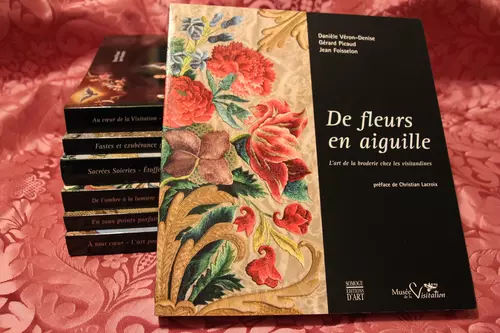
Visiting the Photo Galleries available on the Museum website offers a glimpse at many beautiful pieces of Ecclesiastical Embroider and Ecclesiastical Sewing. The orphrey on the cope in the above photo has some wonderful figure embroidery. The top figures are Mary (Mater Dei) and Joseph. St. Francis is on the lower right, but the watermark blocks the name of the final figure. The work is a very beautiful example of figure embroidery.
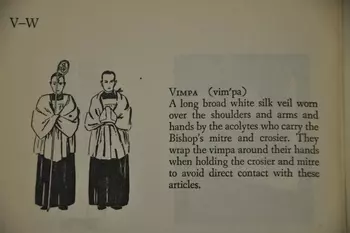
The Coat of Arms of Scharfenberger is embroidered on his vimpae. A gift to the Bishop from the Extraordinary Form Community of Albany.
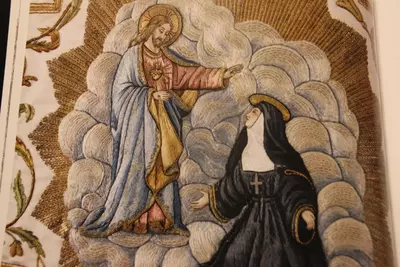
The Museum of the Visitation features stunning works of art produced, collected, and saved over many Centuries by the Order of the Visitation. The artworks include many ornamental branches of church art such as statues, silver, textiles, and silks.
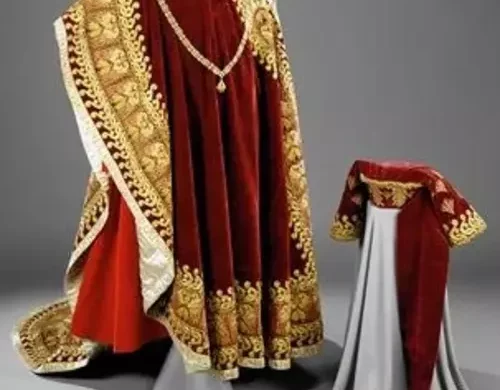
Featuring the Habsburg Splendor Exhibit at the Minneapolis Institute of Arts, a showcase of exquisite goldwork embroidery. Don’t miss some pieces, including suits of armor, tapestries, curiosities, and renowned paintings by artists like Caravaggio and Hans Holbein. Visit the intricate details on the Minneapolis Institute of Art’s webpage for a closer look at this splendid collection.
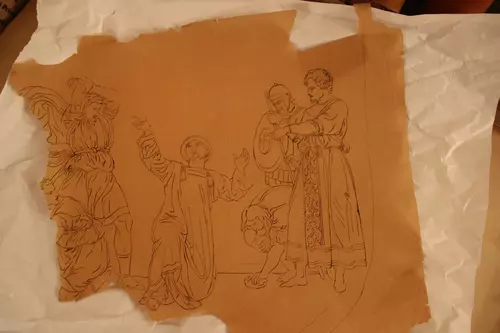
Trash or Treasure?
– These beautiful Ecclesiastical Designs are in tatters, are torn, and have none of their original beauty or glory. But they represent the hard work and artistic talent of a designer from years ago, creating ideas on paper to be transferred via Needle and Thread to fabric. They represent hours of selfless giving of time and talent to create objects of beauty for use in the Church.
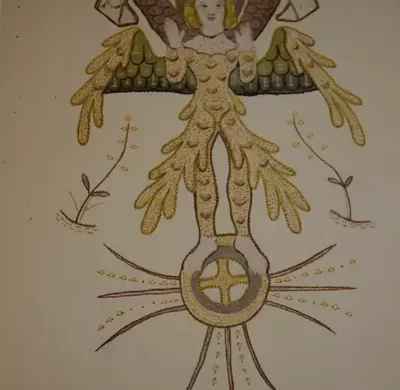
Two of those unusual things are the Seraphim and the Cherubim. Artisans of the past have grappled with these creatures and provided some interesting interpretations. The powdering designs, dating from the glory days of Opus Anglicanum, give us some wonderful examples of these delightful interpretations of Seraphim and Cherubim.
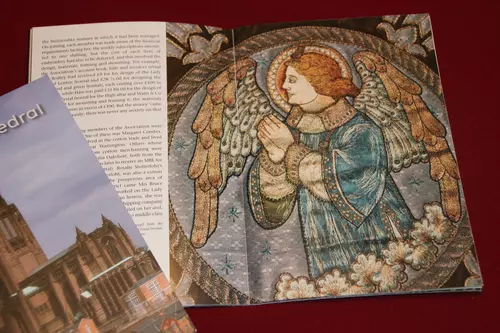
“The Embroideries at Liverpool” book talks about how people made beautiful embroideries for Liverpool Cathedral. A group of ladies had the idea to use one designer for all the embroideries, making them match the building. The book shares the story of these women who not only created amazing embroideries but also helped with the money for the projects.
Learning about chasubles, important church garments, and their historical use. Some find it challenging to reintroduce them, but resources explain their history and Lutheran significance, promoting understanding and appreciation.
Exciting Ecclesiastical Embroidery event at Ely Cathedral in the UK! The Royal School of Needlework presents over 60 stunning displays, including rare pieces like the Litany of Loreto panels. showcasing exquisite needlework and historical artifacts from Ely Cathedral. Workshops on goldwork and silk shading add to the charm of this event.
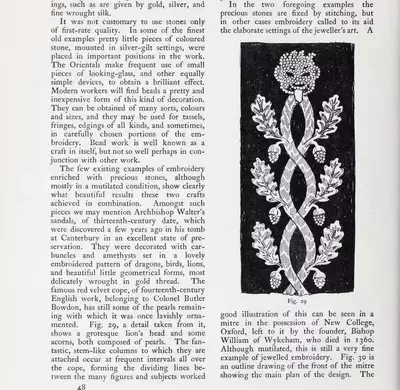
Post from Gracie Christie’s book Embroidery: A Collection of Articles on Subjects Connected with Fine Embroidery which had the design for the lion’s head worked in pearl and beadwork. While updating links in that article, some other resources surfaced, which might provide enjoyable reading and viewing as the New Year gets underway. The first stop is a short journey back in time to a previous Exhibit at the Metropolitan Museum of Art: Ecclesiastical Vestments of the Middle Ages: An Exhibition.
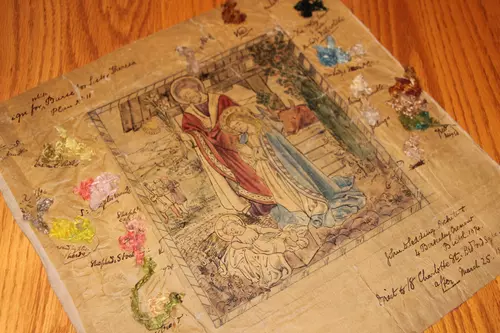
Nativity Ecclesiastical Embroidery Design created in 1874 by the architect of the Gothic Revival period John D. Sedding.
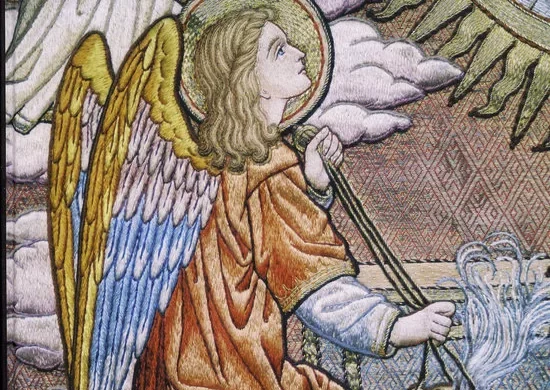
Book written by Marike van Roon, Head Curator at Amsterdam University as her dissertation was added to my library last summer and has become a favorite. Beginning at around the 1800s, the book lays out the history of European Ecclesiastical History through the 1960s. There is a nice mix of primary source material in the form of sketches and illustrations from texts and authors of the period, while stunning black and white, and color photography of actual vestments pieces
Elizabeth Hoare, the owner of Watts and Co., played a unique role in preserving Ecclesiastical Vestment history. During her ownership, she safeguarded hand-embroidered works from the late 19th to mid-20th century, ensuring their survival when they were undervalued. Her efforts created a lasting legacy, and today, her collection is displayed at Liverpool Cathedral’s Cathedral Gallery.
This is a digital initiative that aims to use social media in a new way – new boards on Pinterest will be added every week, each dedicated to a single object and presenting images that convey technical information.
You must be logged in to post a comment.